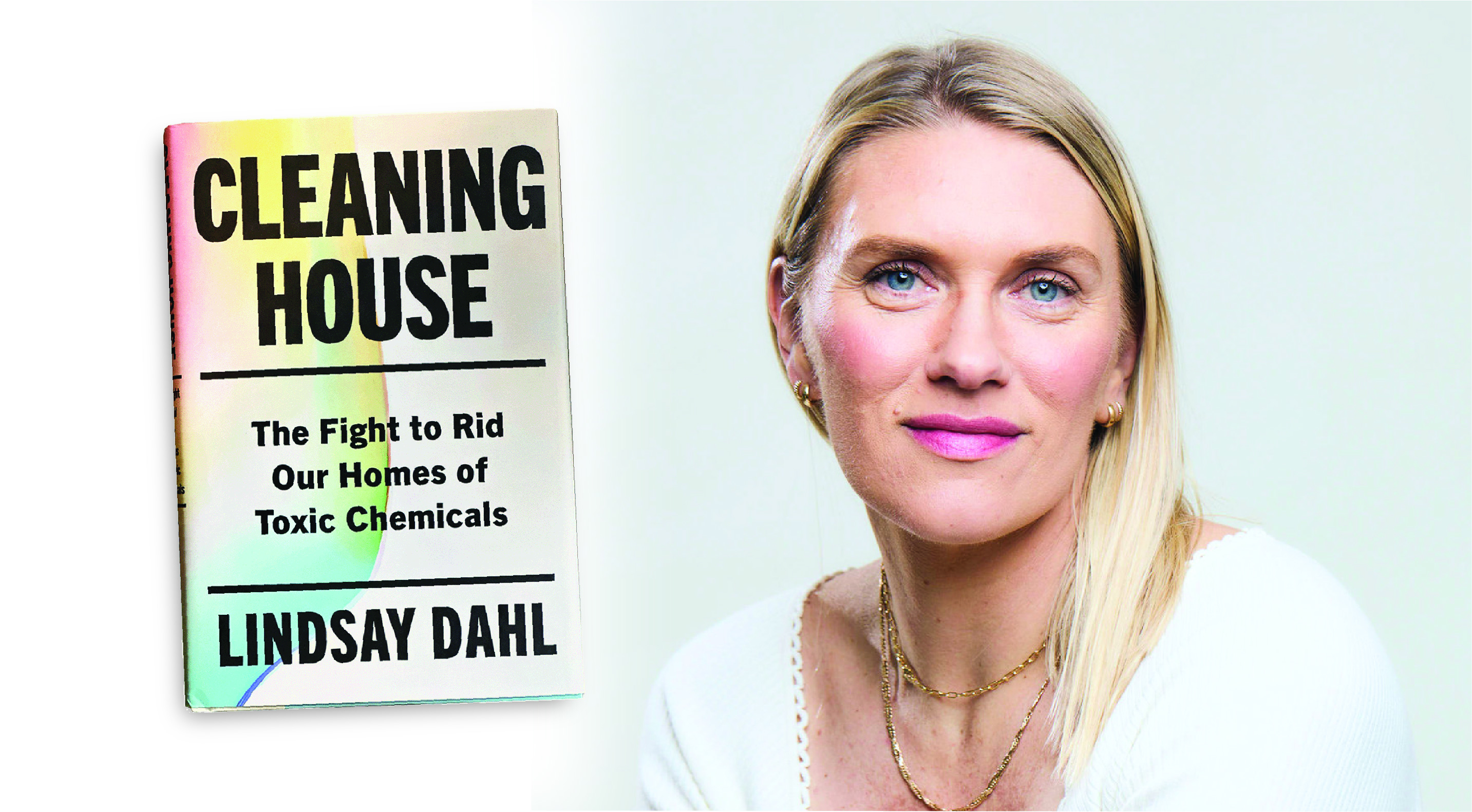Southwest Minneapolis Author Lindsay Dahl published Cleaning House: The Fight to Rid our Homes of Toxic Chemicals with Harper Collins. The book was released on August 5th.
The book unpacks the complex web of science, politics, and culture of today’s “clean living” movement. Through fast paced memoir style writing, Dahl introduces us to cutting-edge scientists, lawmakers, and CEOs working to fight toxic chemical pollution. Backed by a large bibliography of peer-reviewed science, Dahl cautions us from falling prey to culture wars and misinformation on social media, so we can continue to address meaningful sources of toxic chemical pollution in our air, water, and products.
Lindsay starts her book bringing readers through her journey as a young lobbyist, working to pass legislation to ban toxic chemicals from consumer products. You can read an excerpt here from Chapter 2 where she describes testifying against the chemical industry in Minnesota in support of a bill that eventually became the first ban on Bisphenol A (BPA) in baby bottles in the country.
The book will be available at Magers & Quinn and other local bookstores, or can be purchased online at Bookshop.org.
----------------------------------------------------------
As I was flipping through my note cards, rehearsing my talking points to calm my nerves, the doors to the room swung open. I watched my gladiator opponents file in: polished, older-than-me lawyers and chemists for the chemical industry wearing pin-striped suits. The chemical industry knew this hearing was important too. I’d never seen this particular crew, the A team sent from the mother ship in DC to testify that the evidence was inconclusive and that there wasn’t enough proof to warrant a ban. Part of me felt like a child play acting in a room full of adults. I fiddled with my turtleneck, which suddenly felt unsophisticated and hokey. I’d taken to wearing it on days when I knew I’d need cover—not only from the cold but to hide the red splotches that broke out on my neck when I got nervous.
I heard my name called. Locking eyes briefly with the bill’s author, Representative Karen Clark, who was sitting directly behind me for moral support, I walked to the stand carrying two stacks of paper—a thick one and a slim one. Having watched so many hearings unfold, I had learned the power of telling stories and using visuals. With my hand visibly shaking, I pointed to the flimsy, barely-there pile of papers and forced my lips to move.
“These are the eleven studies that the chemical industry points to claiming BPA is safe. You will hear a lot about these from the opposition today,” I started in a trembling voice. Gaining confidence with the weight of my words, I continued, holding eye contact with each committee member for emphasis. “These studies were funded by the chemical industry and designed with safety as the endpoint, intentionally using high-level doses of BPA in rats, where no harmful health effects occur.”
I then explained, doing my best to channel Shanna Swan, that when it came to human health, it was the low doses of endocrine disruptors such as BPA and phthalates, not the high doses, that had the most power to turn our hormones on and off and cause problems. “These chemicals are acting in ways we never anticipated or intended, defying the outdated principle we all learned in science class, that the dose makes the poison.”
Then I laid the hefty stack next to the small one, placing my slightly sticky hand on top of it for impact. “And these are the 150 peer-reviewed studies by environmental health researchers showing that BPA is harmful at low doses—the same doses that babies are
routinely exposed to through drinking milk from their baby bottles and that interact with their fragile endocrine system.” I slow-rolled my speech for a little dramatic effect. “Every. Single. Study in this pile has gone through a strict process of unbiased, peer-reviewed scrutiny rigorous enough to be published in well-respected medical journals.” I didn’t get too deep into the science, but let the strength of the evidence and the stark visuals tell the story.
I then pulled out two baby bottles I had at the ready for exactly this moment. Clara, the year before, had so artfully asked the committee members if they could tell the difference between a rubber ducky with phthalates and one without phthalates, so I took a page from her book to show the real-world choices that parents faced. “I purchased these two bottles just a few blocks from the state capitol at Walmart. Can you tell which bottle was made with BPA and which one wasn’t?”
It was a rhetorical question, of course. I waited for a beat, letting the silence speak volumes. “Most Minnesota parents can’t tell either. This bottle is made with BPA and is more expensive than the other bottle, made from a safer plastic, polypropylene. If there is science that shows this bottle is linked to hormone disruption, why would we take the risk?”
Lindsay Dahl is an author based in Southwest Minneapolis. Her book, Cleaning House: The Fight to Rid our Homes of Toxic Chemicals, will be available at Magers & Quinn and other local bookstores, or can be purchased online at Bookshop.org.

.jpg)





